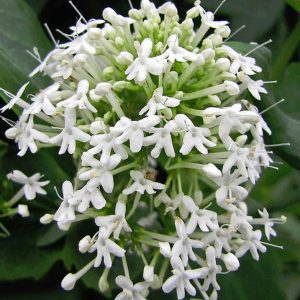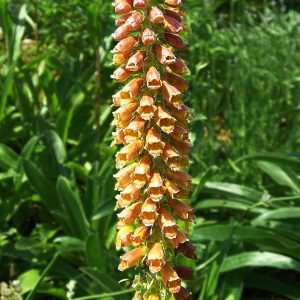- 1-9 pkts $4.50
- 10 pkts FREE
- Express post $12
Salvia lavandulifolia
LAVENDER SAGE
Hardy, beautiful and useful, Salvia lavandulifolia hails from the driest, hottest regions of Spain and Morocco.
Silver, aromatic fine foliage
It earns the name of Lavender Sage because of its fine, aromatic, pale silvery grey foliage.
Which does indeed resemble the foliage of Lavender.
Elegant soft mauve-blue flower heads
Soft mauve-blue, large, showy flower heads elegantly complement the silvery foliage.
And flower heads are held proudly above the bush on long stems, so they make a great show during summer.
Sage with attitude
Salvia lavandulifolia has all the flavour and aroma of Common Kitchen Sage, but on steroids.
So it is a favourite culinary herb in Spain where it is widely used in cooking for its tasty flavour, and in cosmetics, deodorants and dried sachets for it’s wonderful fresh aroma.
Sage x Lavender x Rosemary scent
The leaves have a superb aroma when rubbed – a blend of Sage, Lavender and Rosemary scents.
Superior culinary herb
Try it simply as a flavouring for pasta with pears and olive oil – yummmmm.
Or include it when cooking lamb, chicken, fish, pork and soup.
Traditional herbal uses
The leaves are also traditionally used as a natural perfume, as well as an eco-friendly insect repellent, simply by rubbing on your skin.
Or used as an incense herb for scenting the home, by simply drying in the sun and smouldering in an incense burner.
Salvia lavandulifolia is also valued in traditional village medicine as an aid for improving memory function, anxiety and insomnia. As well as for improving digestion after all that delicious eating.
Built for the job in heat & dry
Lavender Sage revels in any hot, dry position where it is getting plenty of sun and is well drained.
But it will sulk if given too much moisture and too much fertilizer.
So keep it lean and mean on a harsh diet, and it will feel right at home.
Tough drought resistance
Salvia lavandulifolia has tough drought resistance once established.
And likes nothing better than stony or sandy ground.
Also tolerates humidity & salt spray
So Lavender Sage is ideal for challenging conditions – by the sea; in wind-blown spots; in summer humidity and heat; or where salt is a problem.
It is also frost hardy in temperatures down to approx. minus 10°C
Birds & bees savour the large flowers
Our native honey-eating birds enjoy the large flower heads as much as we do over summer.
And busily work the bush sipping nectar with the bees.
Rabbits & deer detest the bush
While the pesky rabbits and deer turn up the noses because of the high oil content, strong flavour and aroma.
Ball of flavour & aroma
Evergreen (really ever-silver) shrub 75-80cm. High approx. x 80cm. Wide.
Give it a stern haircut in early spring to maintain a decorative ball shape.
Great in pot or garden
Salvia lavandulifolia is a ball of flavour and aroma, and looks great in a pot as well as in the garden. Or anywhere that you can enjoy that intense fragrance.
SEED SOWING ADVICE: QUICK & EASY
Sow seeds of Salvia lavandulifolia at any time of year in a punnet indoors.
Sow indoors for quick, early plants: First sow the seeds in a punnet on the surface of good quality seed raising mix.
Then pat the seeds gently to the surface of the mix to ensure good contact.
Now barely cover the seeds with sieved mix, sand or grit.
Becausethese seeds need light for germination.
Then thoroughly moisten the mix by standing the sown punnet in a shallow water bath, and allowing the moisture to percolate up to the surface of the mix from below.
And continue to keep the sown punnet consistently moist, but not waterlogged, by misting from a spray water bottle, as required.
Covering the punnet with a clear plastic/glass cover helps to maintain consistent moisture.
Temperatures of 18-22C approx. are best for rapid and optimum germination.
So you can use a heat mat to maintain warmth in cooler parts of the year, if you have one.
Now place the sown, moist punnet in a warm, well lit area (but not in any direct sunlight).
Seedlings emerge in approx. 10-14 days.
But do not discard the punnet too quickly after the first seeds have popped up – as these plants naturally stagger their germination.
Seed Count: 12 seeds per pack (seed of this unusual and beautiful Sage is scarce).
Click here for Nursery Open Days & Open Gardens Information
https://www.gardivalia.com.au/open-gardens
Click here to go back to Seeds Shop
https://www.seedscape.net.au/shop/
Related products
-
Add to WishlistAlready In WishlistAdd to Wishlist
-
Add to WishlistAlready In WishlistAdd to Wishlist
-
Add to WishlistAlready In WishlistAdd to Wishlist
-
Add to WishlistAlready In WishlistAdd to Wishlist





